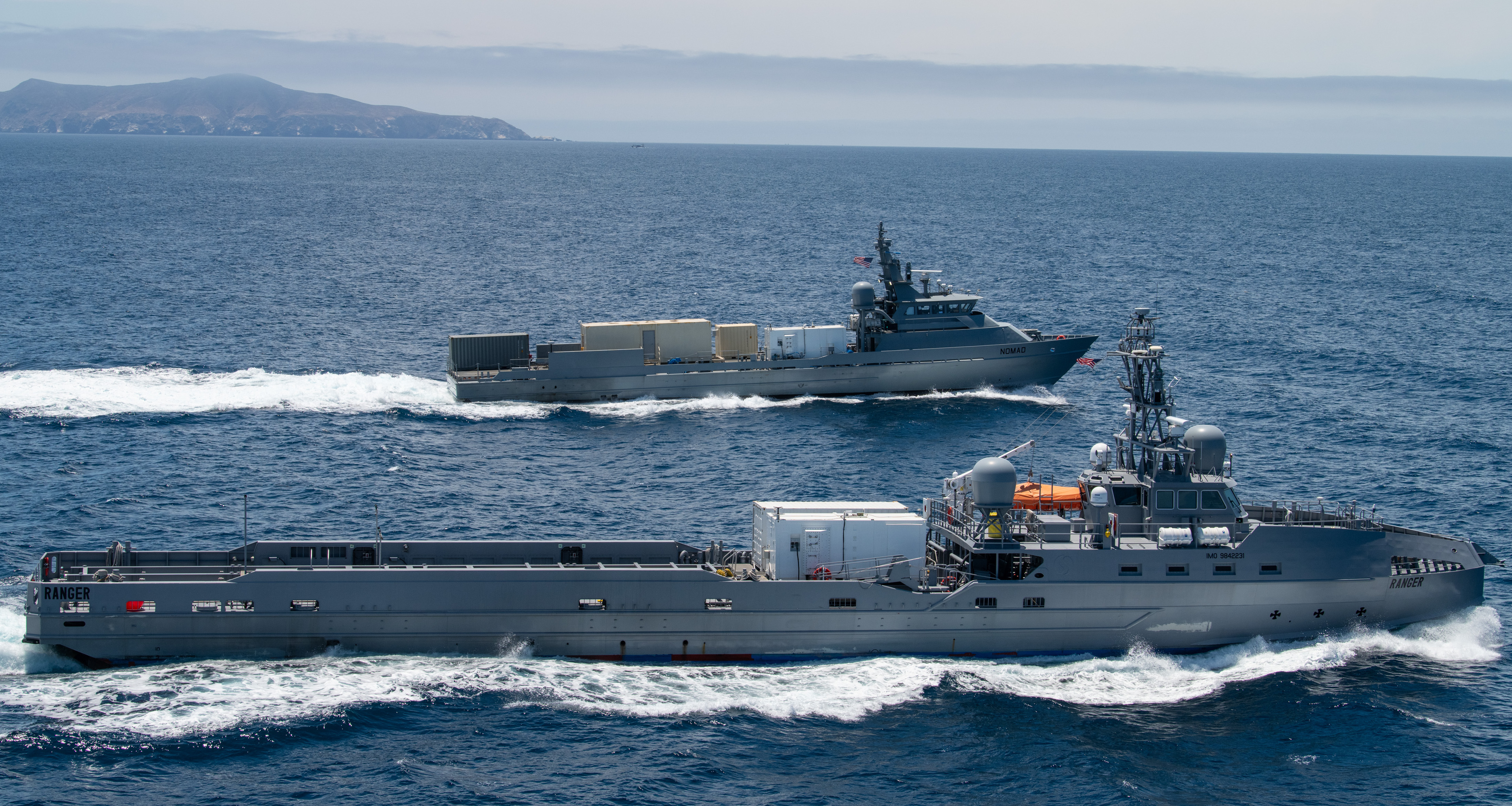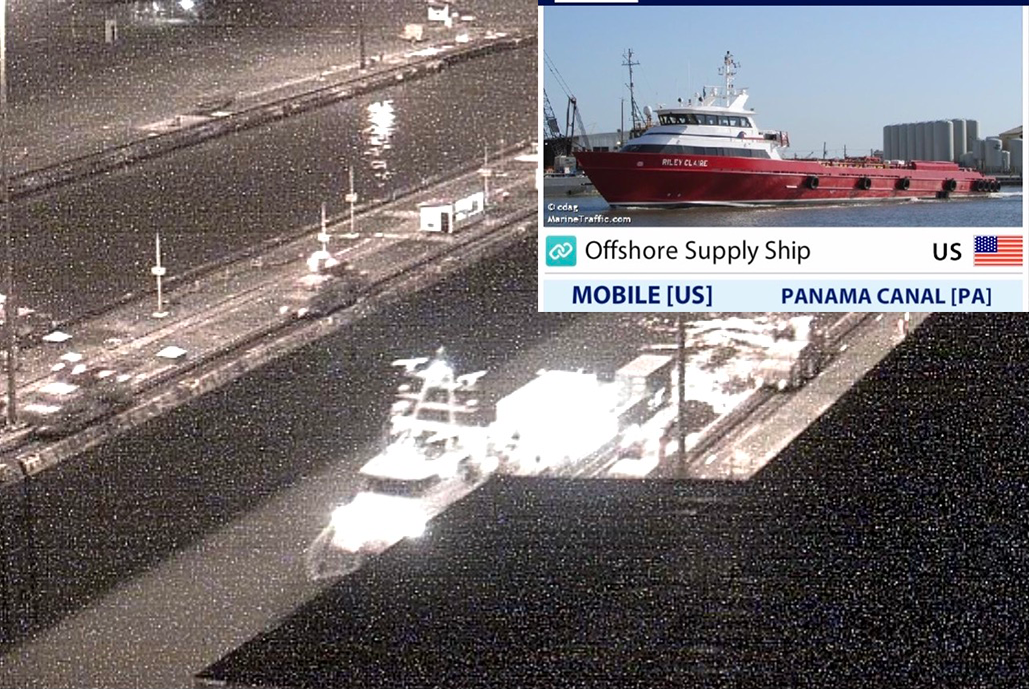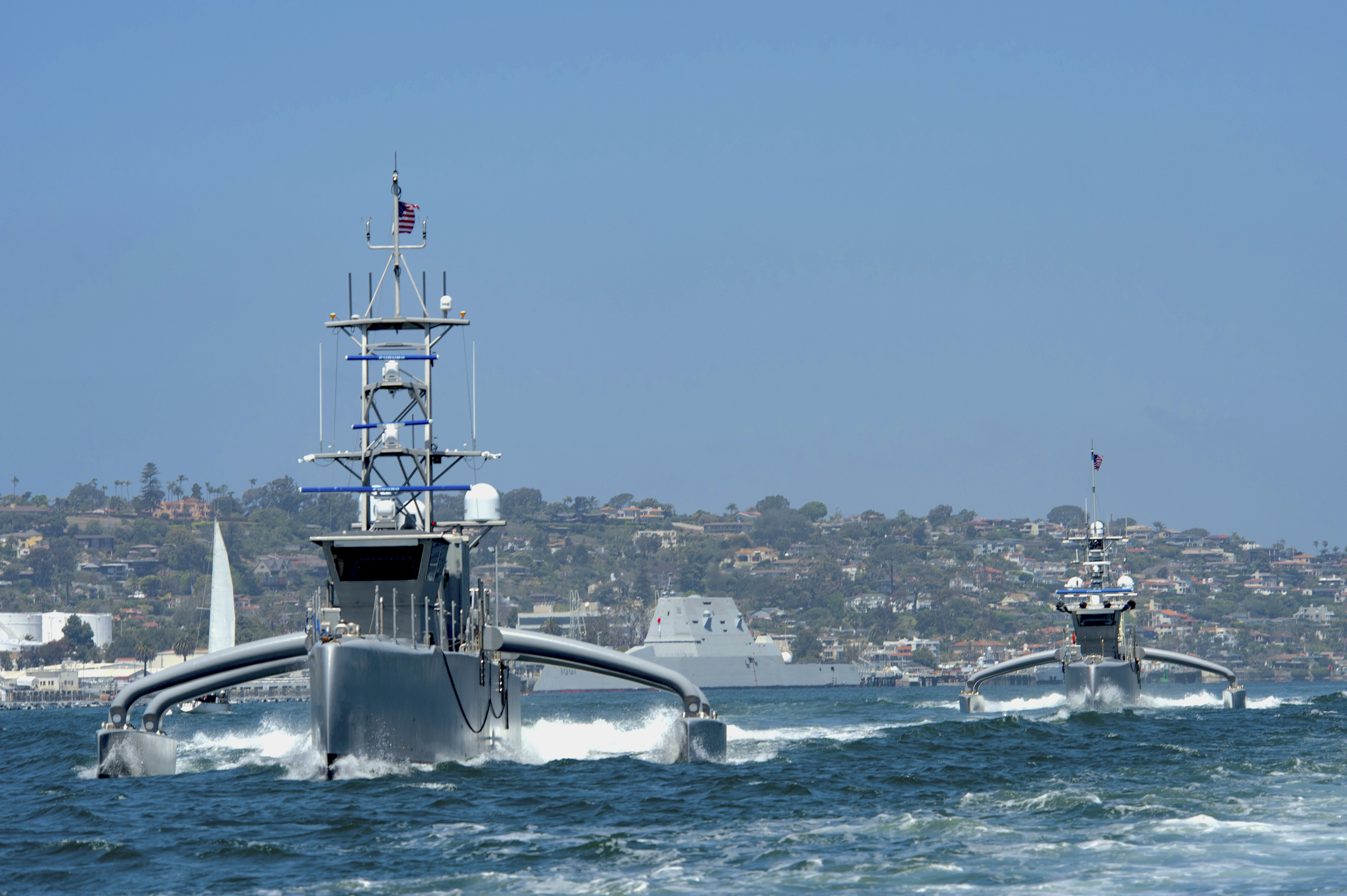
The next pair of ships slated for the Navy and the Pentagon’s test program for autonomous ships are under construction on the Gulf Coast and set to join the service next year, defense officials told reporters on Tuesday.
The Navy’s two new Ghost Fleet Overlord surface ships will join two existing hulls developed by the Pentagon’s Strategic Capabilities Office as part of the service’s testing regime for its emerging Large Unmanned Surface Vehicle (LUSV) concept, Capt. Pete Small, Navy Program Manager for USVs, told reporters on Tuesday.
“They will both be launched and go through a test and trial period in [Fiscal Year] 2022 in such that by the end of FY 22, we will have transitioned both of the first two vessels from SCO to the Navy, and we will have taken delivery of the two additional Navy-funded Overlord prototypes from new construction delivery and have four in inventory by the end of 22,” Small said.
Small did not disclose the industry teams working on the ships when asked by USNI News. However, SCO contracted with Gibbs & Cox and L3 ASV Global in 2018 to convert the first two Overlord ships from existing commercial ships to the autonomous prototypes. USNI News understands the industry team for the two new Navy Overlord hulls are the same as the first two SCO ships.
A request for the cost of the two Navy Overlord hulls was acknowledged by a Pentagon spokesman, but USNI News did not immediately receive a reply.
All four ships are based on Offshore Support Vessels built for the oil and gas industry and have been modified to be operated remotely from a ground control station on shore, Small said.
The first two ships, “were already designed for low manning and had a high degree of digital control already incorporated into the commercial design,” he said.
“A lot of the work has been focused on connecting the threads of digital control to the autonomy and command and control infrastructure.”

In an undated photo released on Tuesday, both SCO ships – Ranger and Nomad—were seen with an extensive array of communications links and sensors to link the vessels with the California–based unmanned control station.
A major test for the ships were the transits of Ranger and Nomad from the Gulf Coast through the Panama Canal to California. Both voyages were first reported by USNI News.
In May, Nomad completed the trip to Point Loma, Calif., after leaving its home base in Mobile, Ala., traveling 4,421 nautical miles. The ship was able to do the majority of the transit autonomously, operating under manned control when passing through the Panama Canal. The rest of the trip was directed by the SCO and the Navy from California.
“The command and control systems were able to provide a mission plan, which consists of a scheme of maneuver and the system calculates the course in speed to complete those missions. The system reacts to the contact that it encounters along the way and replans and reprioritizes how to achieve those objectives,” Luis Molina, the deputy director of SCO, told reporters.
The reliability of the ships’ hull, mechanical and engineering systems was also tested as part of Ranger’s and Nomad’s transits.
Molina said Nomad engines lasted the entire transit with no issues.
“Part of the demonstration and operations that we’re doing is proving out the modifications that we’ve done and stressing those systems to build that operator trust,” he said.
Endurance will be key for LUSVs that are being positioned to operate in the Western Pacific.
“The Navy’s CONOPs for larger unmanned surface vessels are far forward. That inherently brings an endurance requirement to get on station and remain on station for useful periods of time and size as required to deliver that endurance which is … tied to reliability in HM&E complexity,” Small said.
Compatibility with existing systems on manned ships is also part of the LUSV concept.

“The intent for the Navy’s USV plans are to incorporate government furnished command and control systems, which don’t necessarily want to be miniaturized specifically for unmanned operations and want to be fleet interoperable with manned combatants,” Small said.
Eventually, the Navy wants to arm LUSVs with vertical launch cells to act as magazines for manned ships, while sailors will control the targeting and firing decisions from other ships or shore stations.
Molina said the hulls need to, “accommodate government-furnished command and control and C4I and potentially weapons systems… We have worked extensively in this program to outfit these ships with excess margin and capacity to accommodate those payloads and also in modifying the shipboard deck structures to enable rapid integration of adoptable payloads in a modular sense. From a physical modularity standpoint and from an architecture modularity standpoint, we think that we have developed a very good test bed for future capabilities.”
SCO and the Navy will continue testing concepts on Ranger and Nomad until SCO turns the ships over to the service’s Surface Development Squadron in January, USNI News understands.
SURFDEVRON, the Navy’s surface experimentation unit, also operates two Sea Hunter medium USVs, the Zumwalt-class destroyers, early Littoral Combat Ships and other unmanned assets.
Last year, the Navy awarded $47 million in study contracts to Austal USA, Huntington Ingalls Industries, Fincantieri Marinette, Bollinger Shipyards, Lockheed Martin and Gibbs & Cox to develop LUSV designs.





